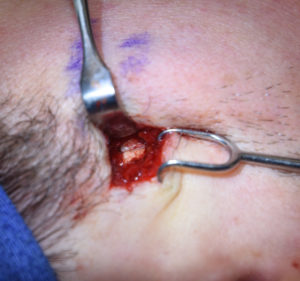Cheekbone reduction surgery typically is done by a double osteotomy technique. The anterior cut allows the posterior body of the zygoma (main body of the cheekbone) to move in. The posterior cut is done at the back end of the attached zygomatic arch just in front of the ear. These two cuts allow the whole side of the cheekbone to move inward. This creates the facial narrowing effect.
The anterior cheekbone osteotomy is done from inside the mouth and various design patterns have been described for it. But regardless of the design of the bone cut, it needs to be secured with a plate and screws to prevent inferior migration and sagging cheek soft tissues. Failure to do so is the most common cause of postoperative loss of cheek volume.

Dr. Barry Eppley
Indianapolis, Indiana


